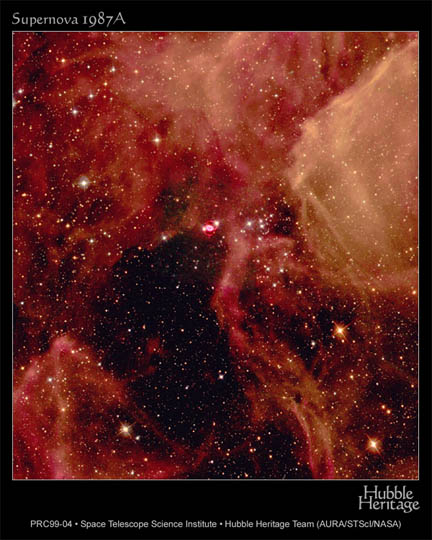
|
Supernovas blast star debris into surrounding regions at incredible speeds (~40 million km/hour) and over amazing distances. Still, to give you a sense of perspective, here is Supernova 1987A in the context of part of the Large Megallanic Cloud. Can you spot the bright tiny ring and the double pink rings near the center of the image? This is the supernova. The rest of the reddish material consists of wispy tendrils of gas and dust unrelated to the explosion. So, even though supernovas are huge, space is bigger. Many of the bright stars are bluish (take my word for it) and therefore hot and young. They are of the same generation as the star that exploded. Since this region is also a probable site of new star formation, star birth, death, and recycling are occurring in the same general place at the same general time. Supernovas are rarely observed, so this one that took place in 1987 generated a lot of excitement. Next image: Close-up of 1987AImage credit: Hubble Space Telescope; The main source for HST images and explanations is HubbleSite.org. |
|
|
|
